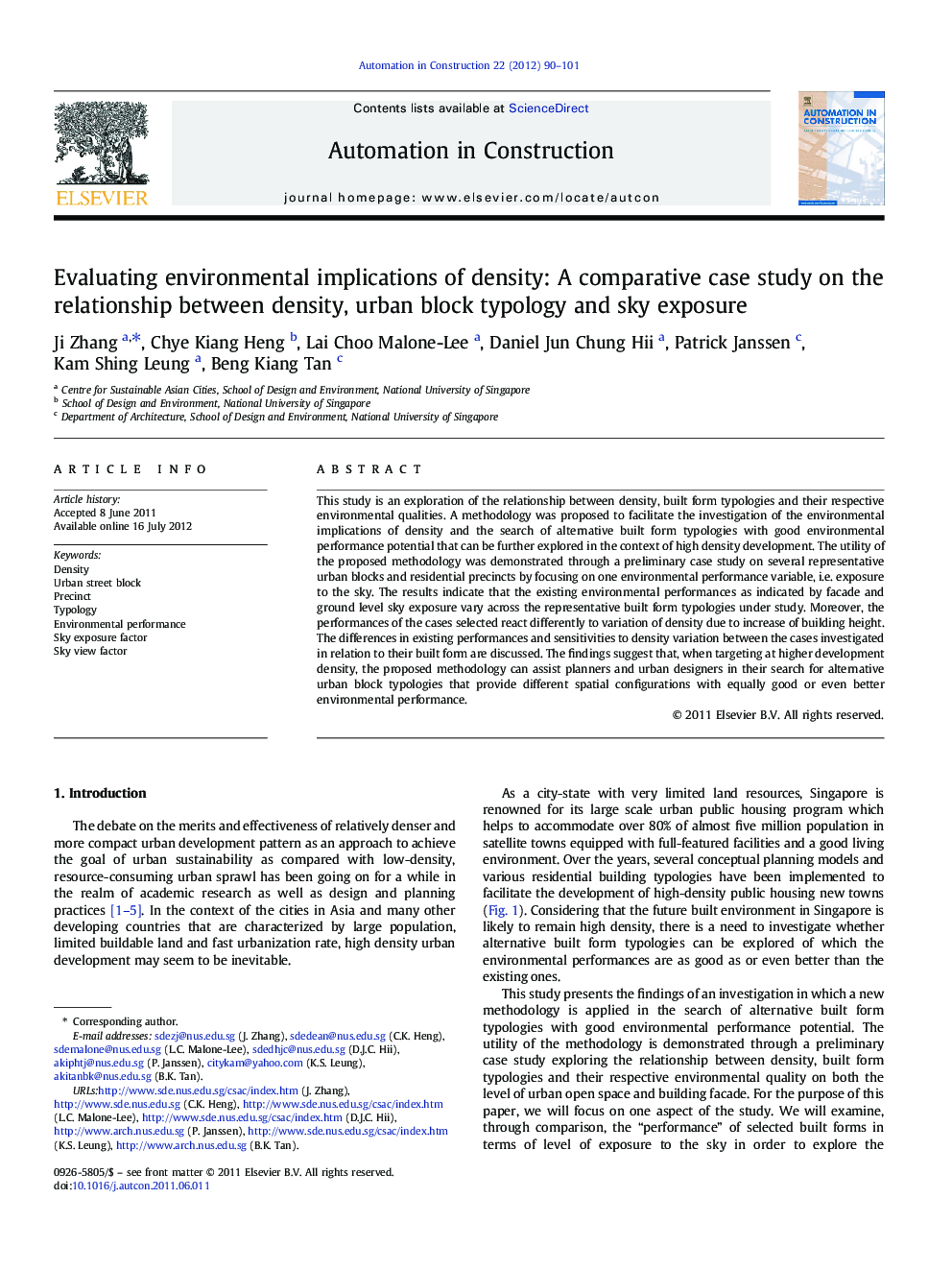| Article ID | Journal | Published Year | Pages | File Type |
|---|---|---|---|---|
| 246909 | Automation in Construction | 2012 | 12 Pages |
This study is an exploration of the relationship between density, built form typologies and their respective environmental qualities. A methodology was proposed to facilitate the investigation of the environmental implications of density and the search of alternative built form typologies with good environmental performance potential that can be further explored in the context of high density development. The utility of the proposed methodology was demonstrated through a preliminary case study on several representative urban blocks and residential precincts by focusing on one environmental performance variable, i.e. exposure to the sky. The results indicate that the existing environmental performances as indicated by facade and ground level sky exposure vary across the representative built form typologies under study. Moreover, the performances of the cases selected react differently to variation of density due to increase of building height. The differences in existing performances and sensitivities to density variation between the cases investigated in relation to their built form are discussed. The findings suggest that, when targeting at higher development density, the proposed methodology can assist planners and urban designers in their search for alternative urban block typologies that provide different spatial configurations with equally good or even better environmental performance.
